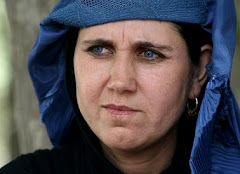 Executive Summary UNAMA Human rghts Unit
Executive Summary UNAMA Human rghts Unit
1.
This Report on the protection of civilians in armed conflict in Afghanistan in 2008 iscompiled in pursuance of the United Nations Assistance Mission in Afghanistan (UNAMA)
mandate under United Nations Security Council Resolution 1806 (2008). UNAMA conducts
independent and impartial monitoring of incidents involving loss of life or injury to civilians
as well as damage or destruction of civilian infrastructure and conducts activities geared to
mitigating the impact of the armed conflict on civilians. UNAMA’s Human Rights Officers
(national and international), deployed in all of UNAMA’s regional offices and some
provincial offices, utilize a broad range of techniques to gather information on specific cases
irrespective of location or who may be responsible. Such information is cross-checked and
analysed, with a range of diverse sources, for credibility and reliability to the satisfaction of
the Human Rights Officer conducting the investigation, before details are recorded in a
dedicated data base. However, due to limitations arising from the operating environment,
such as the joint nature of some operations and the inability of primary sources in most
instances to precisely identify or distinguish between diverse military actors/insurgents,
UNAMA does not break down responsibility for particular incidents other than attributing
them to “pro-government forces” or “anti-government elements”. UNAMA does not claim
that the statistics presented in this report are complete; it may be the case that, given the
limitations in the operating environment, UNAMA is under-reporting civilian casualties. In
January 2009, UNAMA introduced a new electronic database which is designed to facilitate
the collection and analysis of information, including disaggregation by age and gender.
2. In compliance with its mandate granted under UN Security Council Resolution 1806 (2008),
paragraph (g), the Human Rights Unit of UNAMA (UNAMA Human Rights) undertakes a
range of activities aimed at minimizing the impact of the conflict on civilians, including
reporting through the UN Secretary General to the Security Council, the Special
Representative of the Secretary General (SRSG) UNAMA, the UN Emergency Relief
Coordinator, Office of the UN High Commissioner for Human Rights, and other UN
mechanisms as appropriate. UNAMA Human Rights advocates with a range of actors
including Afghan authorities, international military forces (IMF), and others with a view to
strengthening compliance with international humanitarian and human rights law. It also
undertakes a range of activities on issues relating to the armed conflict and protection of
civilians with the Afghan Independent Human Rights Commission (AIHRC), the
humanitarian community, and members of civil society.

3. The armed conflict intensified significantly throughout Afghanistan in 2007 and 2008, with
a corresponding rise in civilian casualties and a significant erosion of humanitarian space. In
addition to fatalities as a direct result of armed hostilities, civilians have suffered from
injury, loss of livelihood, displacement, destruction of property, as well as disruption of
access to education, healthcare and other essential services.
4. UNAMA Human Rights recorded a total of 2118 civilian casualties between 01 January and
31 December 2008. This figure represents an increase of almost 40% on the 1523 civilian
deaths recorded in the year of 2007. The 2008 civilian death toll is thus the highest of any
year since the end of major hostilities which resulted in the demise of the Taliban regime at
the end of 2001. Of the 2118 casualties reported in 2008, 1160 (55%) were attributed to antigovernment
elements (AGEs) and 828 (39%) to pro-government forces. The remaining 130
(6%) could not be attributed to any of the conflicting parties since, for example, some
iii
civilians died as a result of cross-fire or were killed by unexploded ordinance. The majority
of civilian casualties, namely 41%, occurred in the south of Afghanistan, which saw heavy
fighting in several provinces. High casualty figures have also been reported in the south-east
(20%), east (13%), central (13%) and western (9%) regions.
5. In 2007 Afghan security forces and IMF supporting the Government in Afghanistan were
responsible for 629 (or 41%) of the total civilian casualties recorded. At around 39% of total
civilian casualties, the relative proportion of deaths attributed to pro-government forces
remained relatively stable for 2008. However, at 828, the actual number of recorded noncombatant
deaths caused by pro-government forces amounts to a 31% increase over the
deaths recorded in 2007. This increase occurred notwithstanding various measures
introduced by the IMF to reduce the impact of the war on civilians.
6. Air-strikes remain responsible for the largest percentage of civilian deaths attributed to progovernment
forces. UNAMA recorded 552 civilian casualties of this nature in 2008. This
constitutes 64% of the 828 non-combatant deaths attributed to actions by pro-government
forces in 2008, and 26% of all civilians killed, as a result of armed conflict in 2008. Nighttime
raids, and “force protection incidents” which sometimes result in death and injury to
civilians, are of continuing concern. Also of concern is the transparency and independence
of procedures of inquiry into civilian casualties by the Afghan Government and the IMF; the
issuance of solatia payments to victims (given that the different troop contributing countries
have different conditions for such payments); and the placement of military bases in urban
and other areas with high concentrations of civilians which have subsequently become
targets of insurgent attacks.

7. In the reporting period, international military forces did attempt to address a number of
significant concerns. This included streamlining and greater transparency of command
structures between ISAF and Operation Enduring Freedom; the latter now, largely, operates
under the Commander of ISAF who is simultaneously Commander of US Forces
Afghanistan. However, some operators still remain outside his command. It is also
noteworthy that refined tactical directives on “force protection”, air-strikes and night-time
raids have been issued in the latter part of 2008. ISAF also introduced a centralised civilian
casualties tracking cell that is mirrored within US Forces Afghanistan by a similar tracking
cell, aimed at investigating all claims of civilian casualties attributed to ISAF/US Forces
Afghanistan. International military forces showed themselves more willing than before to
institute more regular and transparent inquiries into specific incidents (although the
independence of these inquiries is still questionable).
8. AGEs remain responsible for the largest proportion of civilian casualties. Civilian deaths
reportedly caused by AGEs rose from 700 in 2007 to 1,160 in 2008 – an increase of over
65%. While seasonal trends remained broadly consistent, in practically every month of 2008
the insurgent-caused death toll among civilians was higher than in the same month of 2007
and outstripped that resulting from the actions of pro-government forces. The vast majority
of those killed by the armed opposition are victims of suicide and other IED attacks (725
killed) and of targeted assassinations (271 killed). Together, these tactics accounted for over
85% of the non-combatant deaths attributed to AGE actions. The remainder of AGEinflicted
fatalities resulted primarily from rocket attacks and from ground engagements in
which civilians bystanders were directly affected.
iv
9. Accounting for 725 non-combatant deaths, or 34% of the total civilian casualties in 2008,
suicide and IED attacks killed more Afghan civilians than any other tactic used by the
parties to the conflict. UNDSS recorded 146 suicide attacks and 1,297 detonated IEDs in
2008, with another 93 suicide attacks and 843 IEDs that were discovered before they could
be detonated. Although the majority of such attacks have been directed primarily against
military or government targets, attacks are frequently carried out in crowded civilian areas
with apparent disregard for the extensive damage they cause to civilians. Throughout 2008,
insurgents have shown an increasing disregard for the harm they may inflict on civilians in
such attacks. There have been reports of insurgents using civilians as human shields during
operations and of deliberately basing themselves in civilian areas heedless of the toll that
may be inflicted on civilians. Insurgents have also increasingly targeted persons perceived to
be associated or supportive of the Government and its allies, including teachers, students,
doctors and health workers, tribal elders, civilian government employees, former police and
military personnel, and labourers involved in public-interest construction work. UN and
NGO staff members have also become victims of violence and have been killed, kidnapped
or received death threats on numerous occasions. Schools, particularly those for girls, have
come under increasing attack thereby depriving thousands of students, especially girls, of
their right of access to education. According to UNICEF, attacks on schools and educational
facilities rose by 24%, from 236 incidents reported in 2007 to 293 in 2008.1
10. The deteriorating security situation and drastically reduced humanitarian access intensified
the challenge for the humanitarian agencies to address the growing needs of vulnerable
Afghans. By the end of 2008, “humanitarian space” had shrunk considerably. Large parts of
the south, south-west, south-east, east, and central regions of Afghanistan are now classified
by the UN Department of Safety and Security as an “extreme risk, hostile environment” for
operations. In 2008, 38 aid workers (almost all from NGOs) were killed, double the number
in 2007, and a further 147 abducted. UNDSS recorded over 198 other direct attacks, threats
and intimidations targeting the aid community in 2008.
11. As the conflict intensifies, Afghans are suffering; in addition to the growing number of
deaths and injuries, vulnerable groups are also suffering in terms of destruction of
infrastructure, loss of income or earning opportunities, and deterioration of access to basic
life-supporting services. UNAMA, concerned about the high cost to civilians, calls upon all
parties to respect the relevant rules of international humanitarian law and human rights law
and to do everything in their power to ensure that the impact of their actions has the least
possible negative impact upon the civilian population.

.jpg)




0 نظرات:
Post a Comment